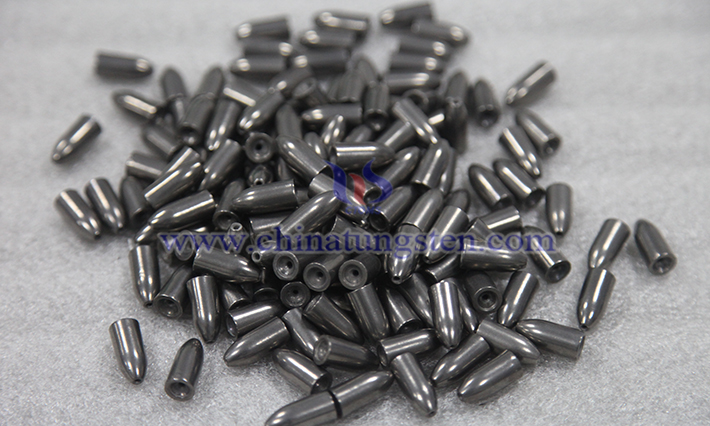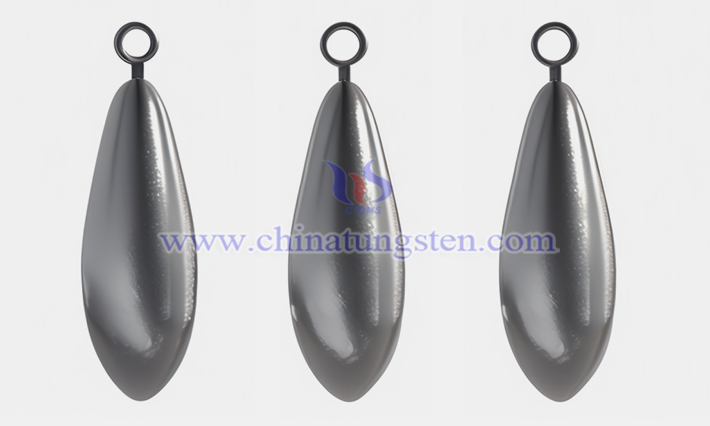Differences Between Tungsten Sinker and Lead Sinker
- Details
- Category: Tungsten Information
- Published on Wednesday, 25 June 2025 19:37
Tungsten sinker and lead sinker are both common fishing weight tools, available in shapes like teardrop, cylindrical, and olive forms. However, they differ across multiple dimensions, including production costs, materials, performance, and manufacturing processes.

I. Material Aspects
Tungsten sinker is an alloy primarily composed of tungsten (85%–99%) with small amounts of nickel, iron, and other metals, designed for fishing. Lead sinker, also known as a lead weight, is made mainly of lead or lead-tin alloys and is an essential auxiliary tool in fishing rigs.
II. Performance Aspects
Density and Volume: Tungsten sinker has a higher density, ranging from 16.5 to 18.75 g/cm³, resulting in a smaller volume than lead sinker at the same weight. This reduces wind resistance during casting, making it ideal for long-distance throws.
Environmental Impact: Tungsten sinker is eco-friendly, aligning with modern sustainable fishing principles. Lead sinker, made from the toxic heavy metal lead, poses risks to water environments and aquatic life.
Hardness and Wear Resistance: Tungsten sinker is impact-resistant and wear-resistant, resisting deformation when contacting rocks or hard objects, thus offering a longer lifespan. Lead sinker, with lower Mohs hardness, wears out more easily and requires frequent replacement.
Corrosion Resistance: Tungsten sinker exhibits stable chemical properties at room temperature, resisting corrosion from seawater, acids, and alkalis, making it suitable for sea fishing or complex water conditions. Lead sinker reacts with oxygen to form lead oxide and corrodes in seawater or acidic environments, potentially releasing lead ions.

III. Manufacturing Processes
Tungsten alloy fishing sinker is made from high-quality tungsten powder through the following steps: Mixing: Tungsten powder (85%–99%) is blended with one or more metal powders like nickel or iron in specific proportions, vacuum-dried, and set aside; Injection Molding: Under inert gas protection, the mixed powder is heated and held for several hours until it flows, then injected into a mold cavity to cool into a blank; Sintering: The blank is heated under inert gas protection, sintered for several hours, and cooled to yield the final product.
Lead sinker production primarily uses casting: High-purity lead ingots are melted, with small amounts of antimony or tin added to enhance hardness. The molten mixture is poured into pre-made molds, cooled, and trimmed of excess material, with weight markings pressed onto the surface.
- Chinatungsten Online: www.tungsten-alloy.com
- CTIA GROUP LTD: en.ctia.group
- Tungsten News & Price: www.ctia.com.cn
- Molybdenum News & Price: news.molybdenum.com.cn
- Tel.: 86 592 5129696; Email: sales@chinatungsten.com



 sales@chinatungsten.com
sales@chinatungsten.com